
Netrek is an Internet game for up to 16 players, written almost entirely in cross-platform open-source code. It combines features of multi-directional shooters and team-based real-time strategy games. Players attempt to disable or destroy their opponents' ships in real-time combat, while taking over enemy planets by bombing them and dropping off armies they pick up on friendly planets. The goal of the game is to capture all the opposing team's planets.

Descent: FreeSpace – The Great War, known as Conflict: FreeSpace – The Great War in Europe, is a 1998 space combat simulation IBM PC compatible computer game developed by Volition, when it was split off from Parallax Software, and published by Interplay Productions. In 2001, it was ported to the Amiga platform as FreeSpace: The Great War by Hyperion Entertainment. The game places players in the role of a human pilot, who operates in several classes of starfighter and combats against opposing forces, either human or alien, in various space-faring environments, such as in orbit above a planet or within an asteroid belt. The story of the game's single player campaign focuses on a war in the 24th century between two factions, one human and the other alien, that is interrupted in its fourteenth year by the arrival of an enigmatic and militant alien race, whose genocidal advance forces the two sides into a ceasefire in order to work together to halt the threat.
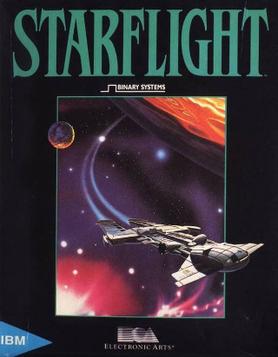
Starflight is a space exploration, combat, and trading role-playing video game created by Binary Systems and published by Electronic Arts in 1986. Originally developed for IBM PC compatibles, it was later ported to the Amiga, Atari ST, Macintosh, and Commodore 64. A fully revamped version of the game was released for the Sega Genesis in 1991.
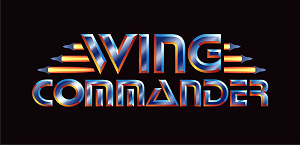
Wing Commander is a media franchise consisting of space combat simulation video games from Origin Systems, Inc., an animated television series, a feature film, a collectible card game, a series of novels, and action figures. The franchise originated in 1990 with the release of video game Wing Commander.

Tyrian is a vertically scrolling shooter developed by Eclipse Software for MS-DOS and published in 1995 by Epic MegaGames. Tyrian was programmed by Jason Emery, illustrated by Daniel Cook, and its music composed by Alexander Brandon and Andras Molnar. The game was re-released as freeware in 2004. A free and open-source port of the game started in April 2007.

Solar Winds: The Escape and its sequel Solar Winds: Galaxy are top-down, space-themed role-playing action games developed by James Schmalz and published by Epic MegaGames in 1993.

Zero Tolerance is a 1994 video game developed by Technopop and published by Accolade exclusively for the Mega Drive/Genesis. It was one of the very few first-person shooters for the console, along with Bloodshot, Duke Nukem 3D and Corporation.

Raptor: Call of the Shadows is a vertically scrolling shooter developed by Cygnus Studios and published by Apogee Software. Its working title was "Mercenary 2029". It was released on April 1, 1994 for MS-DOS compatible systems. The first episode of the game, "Bravo Sector", was distributed as shareware. The other two episodes were sold commercially.
DECWAR is a multiplayer computer game first written in 1978 at the University of Texas at Austin for the PDP-10. It was developed from a lesser-known two-player version, WAR, adding multi-terminal support for between one and ten players. WAR and DECWAR are essentially multiplayer versions of the classic Star Trek game, but with added strategic elements. The game was later used, by scrubbing copyright notices and replacing them, as MegaWars on CompuServe and Stellar Warrior on GEnie. Both versions ran for years.

Silpheed is a video game developed by Game Arts and designed by Takeshi Miyaji. It made its debut on the Japanese PC-8801 in 1986, and was ported to the Fujitsu FM-7 and DOS formats soon after. It was later remade for the Sega CD and has a sequel called Silpheed: The Lost Planet for the PlayStation 2.
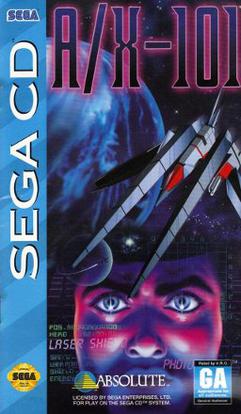
A/X-101 (エーエックス101) is a 1994 rail shooter/FMV video game for the Sega Mega-CD.
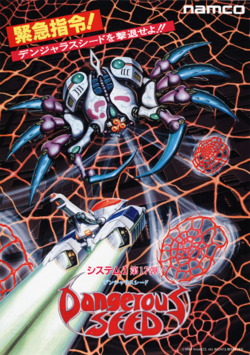
Dangerous Seed is a 1989 vertically scrolling shooter arcade game developed and published by Namco. Controlling one of three different starships, the player is tasked with destroying an alien race known as the Danger Seed before they wipe out all of mankind. Each ship has their own set of weapons and abilities, such as shots that dissolve enemies and target-seeking projectiles, and can sustain multiple hits before being destroyed. The player's ships can also combine into a new ship, the Moon Diver, featuring a stronger shield and additional weapons. It ran on the Namco System 1 hardware.

Marathon is a first-person shooter video game developed and published by Bungie, and released in December 1994 for the Apple Macintosh. The game takes place several centuries into the future in outer space and sets the player as a security officer attempting to stop an alien invasion aboard a colony ship named the Marathon.

Zarlor Mercenary is a vertically scrolling shooter for the Atari Lynx handheld console, developed by Epyx and published by Atari Corporation.
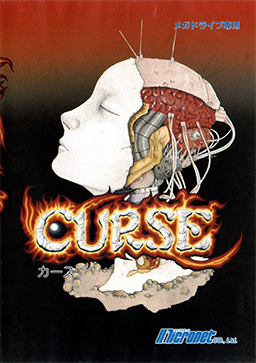
Curse is a 1989 video game developed by Micronet for the Mega Drive video game console. It is a horizontally scrolling shooter with five levels. Although an American release was planned, it was never officially released outside Japan.

Slap Fight is a 1986 vertically scrolling shooter arcade video game developed by Toaplan and published by Taito. Set on the colonized fictional planet of Theron in the future, where an alien race led by Gaudy have invaded the human-controlled location, players assume the role of an Allied League of Cosmic Nations (ALCON) fighter pilot taking control of the SW475 space fighter craft in an effort to counterattack the invaders. Initially launched for the arcades, the game was later ported to other microcomputer and console platforms by various third-party developers, with each one featuring several changes or additions compared to the original release.

Total Eclipse is a space flight simulation video game developed and published by Crystal Dynamics for 3DO. It was later ported to the PlayStation under the title Total Eclipse Turbo. The game was copyrighted in 1993 and released 1994. Total Eclipse Turbo was a launch title for the PlayStation in the U.S., with the game's released date predating the North American console launch by 11 days. A sequel, Solar Eclipse, was released for Sega Saturn and PlayStation.

Star Cruiser is a role-playing first-person shooter video game developed by Arsys Software and released in Japan for the PC-8801 and X1 home computers in 1988. The game was released for the PC-9801 and X68000 computers in 1989, and then ported by Masaya (NCS) to the Mega Drive in 1990.

Radix: Beyond the Void is a 2.5D first-person shooter developed by Canadian studio Neural Storm Entertainment and published by Epic MegaGames for MS-DOS in 1995.

Alien Odyssey is an action-adventure game developed by Argonaut Software and published by Philips Media in 1995. The game features a mixture of first-person and third-person gameplay, with sequences involving shooter, adventure and puzzle mechanics. Alien Odyssey makes use of 3D rendering and full motion video cutscenes which were developed using the developer's proprietary B-Render graphics software. Upon release, the game received a mixed reception, with reviewers praising the visual presentation of the game, whilst critiquing the game's inconsistent mixture of game modes and short length.



















